The 6 Petal Diet is a 6-day slimming food with daily alternation of high protein and carbohydrate foods. A sample of the menu for every day and adherence to the principles of nutrition contribute to weight loss and a decrease in body volume in a short period of time.
On protein days in the diet, due to carbohydrate deficiency, the glycogen level decreases, which triggers the fat burning process due to the use of lipids to provide energy for the body.
Carbohydrates in vegetables, fruits and cereals do not cause fat deposition as they are used to replenish glycogen stores and maintain the vital functions of the human body.
fundamental rules
To lose weight quickly and reduce body volume, you must strictly follow the basic rules of the 6-petal diet:
- do not consume more than 600 gr. protein food, 1500 gr. vegetables, 300 gr. cereals on the corresponding day;
- portions of food should be small - about 150 g. protein products or cereals and up to 500 gr. fruit;
- limit the amount of salt to a minimum;
- drink 2, 5 liters of water a day.
To make the diet more effective, simple carbohydrates are completely excluded from the menu, which can lead to rapid weight gain:
- sugar and products with sugar in their composition;
- coffee;
- sweet drinks;
- white flour products;
- ketchup;
- Mayo;
- mustard.
Diet characteristics
The basis of the 6 petal diet is fish, vegetables, chicken, cereals, cottage cheese, and fruit days, arranged in this order for the purpose of daily alternating proteins and carbohydrates.
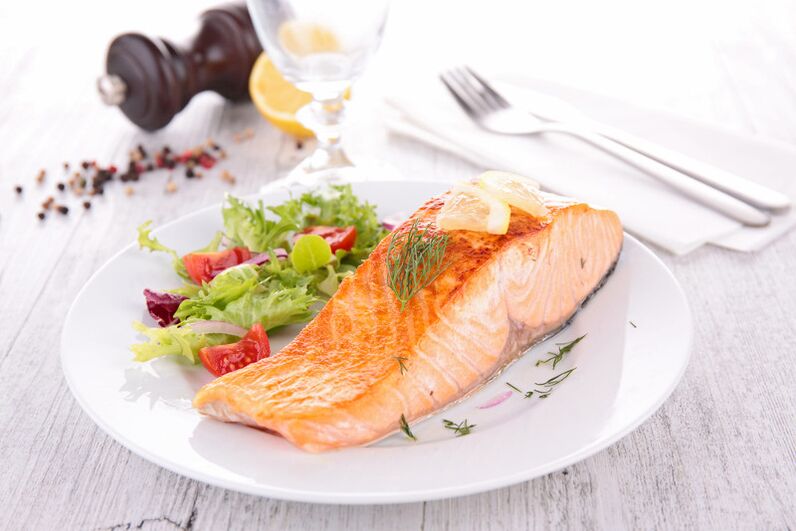
Fish Day. Fish is the most valuable source of protein, healthy fats (omega 3) and vitamins (A, E, H, C, PP). Fish also contains iodine, zinc, selenium and calcium. In the diet, preference should be given to low-fat varieties, such as:
- horse mackerel;
- Pink salmon;
- hake;
- herring;
- tuna;
- herring;
- Golden;
- trout;
- catfish;
- carp;
- salmon.
You are allowed to eat exactly 600 grams of steamed or roasted fish.
Vegetable day. The diet involves the use of low-calorie, starch-free vegetables that do not contribute to weight gain. The high fiber content in vegetables lowers cholesterol and blood sugar levels, removes toxins and nourishes beneficial intestinal microflora.
The menu can include boiled, boiled and roasted vegetables, stocks, soups or smoothies, fresh vegetables in the form of a salad topped with oil.
It is important to know that the use of potatoes in a 6 petal diet is limited due to the large amount of starch in the composition. A small portion of potatoes (up to 100 grams), evenly cooked or roasted, is allowed.
Chicken Day. The composition of chicken meat includes proteins, phosphorus, magnesium, potassium, group B vitamins. To diversify the diet menu, you can prepare broth, roast chicken with spices, make chicken cream soup.
Grain day. At this stage, the diet includes only whole grains (buckwheat, barley, bulgur, oats, brown rice), which contain many valuable nutrients and are complex carbohydrates as they are absorbed slowly and provide energy for the body for a long time.
In addition to cereals, it is allowed to eat whole grain or rye bread (up to 100 grams) and a cup of kvass.
Curd day. The diet menu uses 2-3 cottage cheese, 8% fat (but not fat free) in the form of a yogurt mix with cinnamon or vanilla, yogurt without sugar and additives, milk.
Cottage cheese provides a lasting feeling of fullness due to its high protein content, and it is also a useful source of the body's necessary minerals (magnesium, calcium, sodium, iron), vitamins and lactic acid bacteria.
Fruit Day completes the 6-petal diet, during which it is recommended to eat small portions of 200-300 grams 5-6 times, while you can eat all kinds of fruits and berries available in season:
- apples, pears;
- oranges, tangerines;
- grape;
- bananas - limited;
- pineapple, pomegranate, grapefruit;
- cherry, sweet cherry, strawberry.
The nutritional value of fruits, like vegetables, lies in their high fiber levels and the content of different groups of vitamins. It is important to remember that sweet fruits contain a lot of sugar, so you should prefer more acidic varieties and strictly follow the total daily intake of fruits and berries - up to 1. 5 kg.
Sample 6 petal diet menu
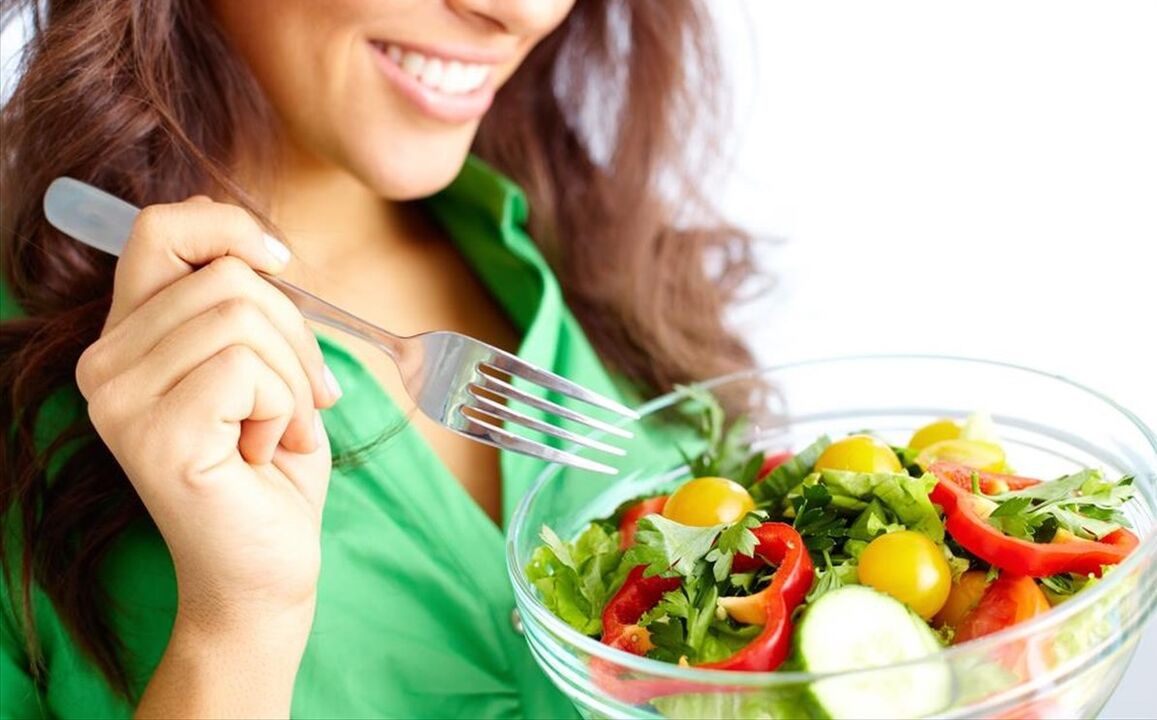
Following the principle of alternating proteins and carbohydrates, when planning a daily menu for a 6 petal diet, it is necessary to use dishes prepared with permitted foods, while the diet should include 3-4 meals without snacks.
Fish
- Breakfast: Cooked hake fillet (200 g);
- Snack: Roasted fish with spices (200 g);
- Lunch: fish broth;
- Dinner: Fish fillet puree with the addition of broth (200 g).
Vegetable
- Breakfast: Boiled beet salad;
- Snack: Cauliflower with steamed carrots;
- Lunch: Zucchini with boiled cabbage, boiled potatoes in their uniform;
- Dinner: Peking cabbage salad.
Chicken
- Breakfast: Cooked filet;
- Snack: Chicken broth with spices and dill;
- Lunch: Roasted Filet;
- Dinner: Broth with part of the cooked filet.
Cereal
- Breakfast: Boiled buckwheat;
- Snack: A glass of kvass;
- Lunch: Spiced Bulgur, a slice of wholegrain bread;
- Dinner: Brown rice.
Curd
- Breakfast: Curd with cinnamon, tea;
- Snack: Yogurt;
- Lunch: Curd with yogurt;
- Dinner: Cottage cheese, tea.
Fruit
- Breakfast: Baked apples;
- Snack: 100 g. berries;
- Lunch: Apple, pear, kiwi and banana fruit salad;
- Dinner: Tangerines.
Revenues
Although the diet is limited, simple recipes can be used to prepare delicious meals, taking into account the recommendations for the choice of food.
roasted trout
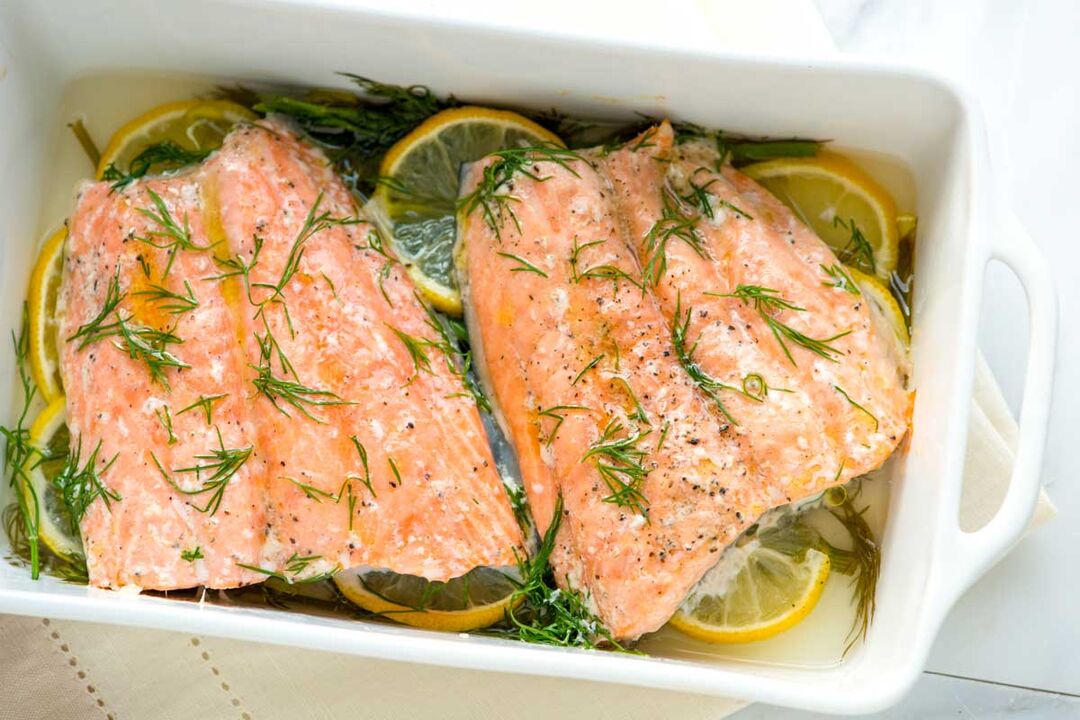
Ingredients: 800 g of trout, lemon, onion, parsley, nutmeg.
The fish is cleaned of scales, washed and cut into portions. Then the fish is salted and sprinkled with the juice of half a lemon. The prepared trout is left to marinate for 20-25 minutes.
Peel and cut the onion into half rings and cut half of the lemon into thin slices. In a baking dish, place aluminum foil to bake, and on top of the onion "pillow", pieces of trout with lemon slices and sprinkle with nutmeg. The leaf is then wrapped to cover the top of the trout.
The fish is roasted in the oven at 180 degrees for 40 minutes. Sprinkle with chopped parsley before serving.
vegetable stew
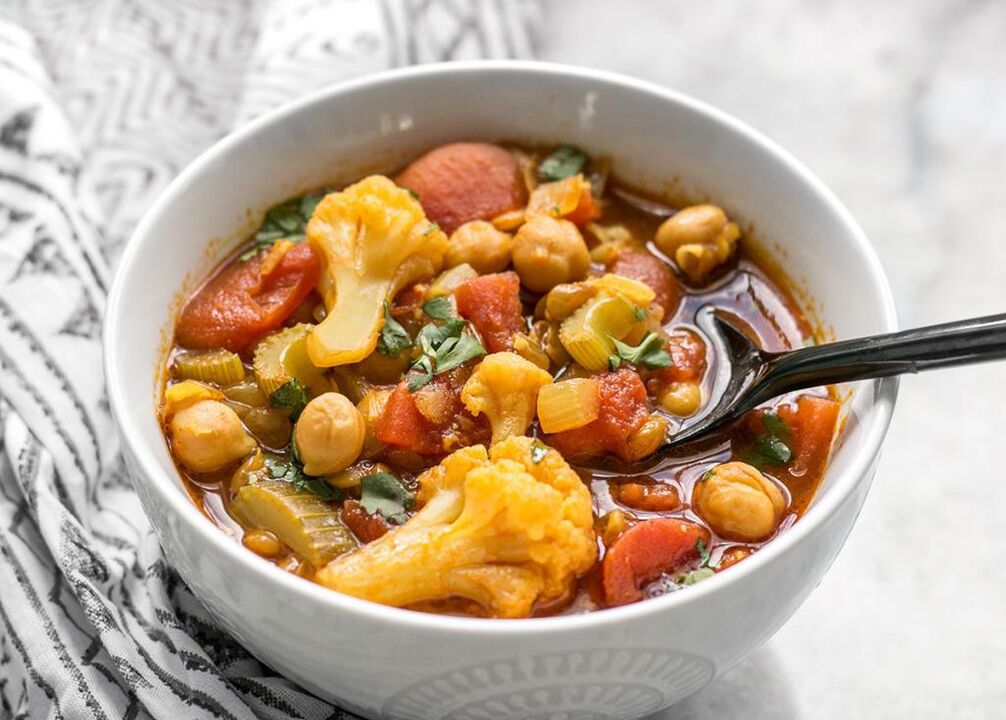
To cook, you will need a medium zucchini, a small white cabbage, 2 peppers and 2 tomatoes, carrots and onions.
The zucchini must be peeled and cut into pieces, chopped cabbage, pepper cut into strips. Then the ingredients are mixed, half a glass of water is added, salted and cooked over medium heat for 20 minutes.
While the stew is steaming, chop the onion, chop the carrots and season with a teaspoon of vegetable oil. At this point, the tomatoes are blanched, peeled, chopped in the mashed potato and added to the skillet to the sauce, which is cooked for 5 minutes.
Then mix the vegetables, add the seasonings and cook the dish over low heat for another 5-7 minutes. Sprinkle with fresh herbs before serving.
pepper stuffed
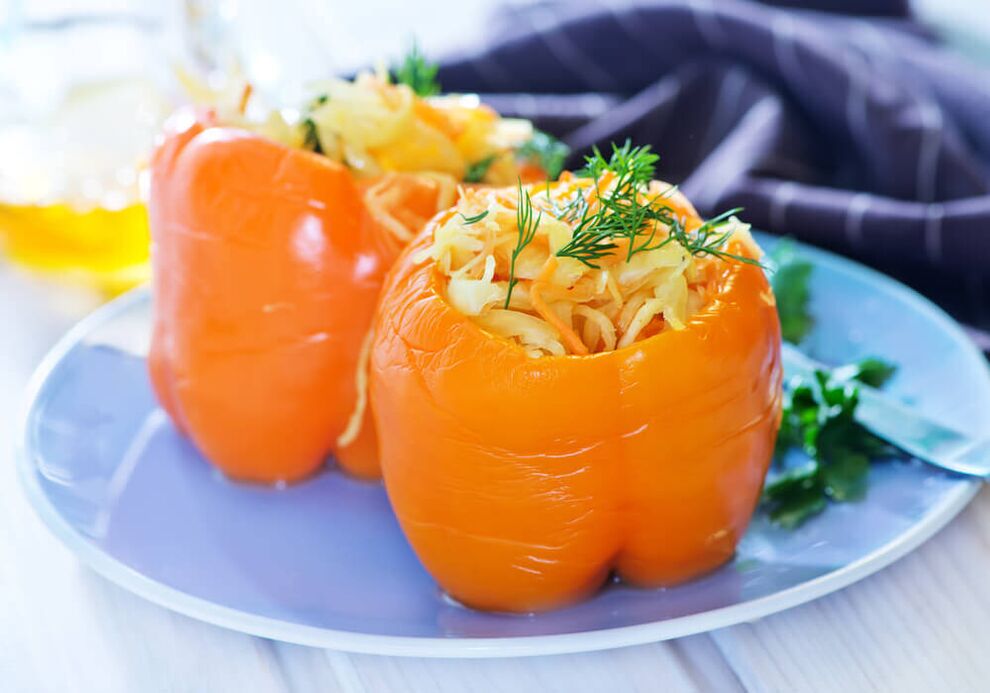
Ingredients needed: sweet peppers - 6-8 pieces, white cabbage - 300 g, 2 carrots, 2 onions, 1 tbsp. a spoon of tomato paste, vegetable oil, black pepper, basil.
Cut the onion into half rings and saute in a little oil for 5-7 minutes. Finely chop the cabbage and cut the carrots into strips and cook together with the onion under the lid, adding 100 ml of water. Add the tomato paste, salt and spices to the dish and cook for 15-20 minutes.
The bell peppers are washed, pitted and stuffed with cooked cabbage. Spread the foil on a baking sheet, spread the prepared pepper and wrap the ends.
The pepper is roasted in the oven for 20 minutes. Sprinkle with green parsley or dill before serving.
Roasted chicken breast with spices
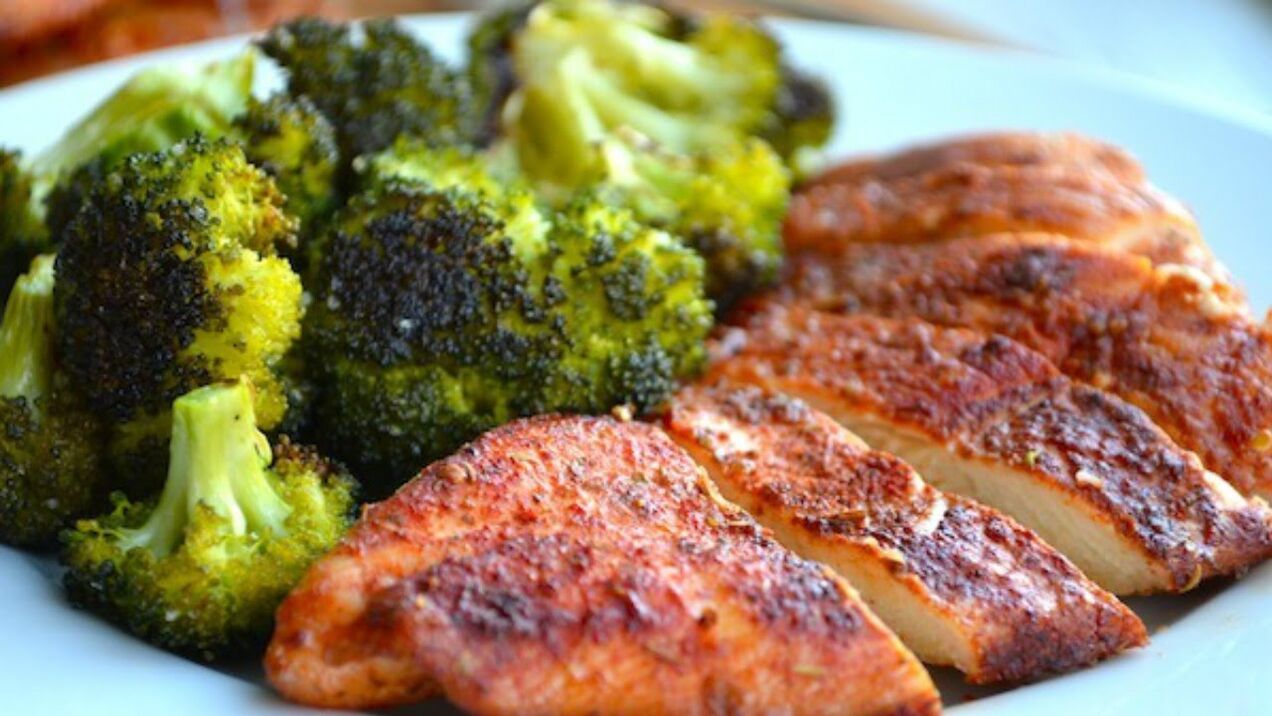
Ingredients for the dish: chicken breast - 1 pc. , 1 tbsp. me. oil, pepper, herbs.
Preparation: the breast is washed and sprinkled with salt, pepper, butter and herbs on all sides. The chicken is then covered with aluminum foil and left to marinate in the refrigerator for 30 minutes.
After marinating, the brisket is placed in a mitt for roasting. Chicken is cooked in a preheated oven at a temperature of 200 degrees for twenty minutes.
Quinoa in slow fire
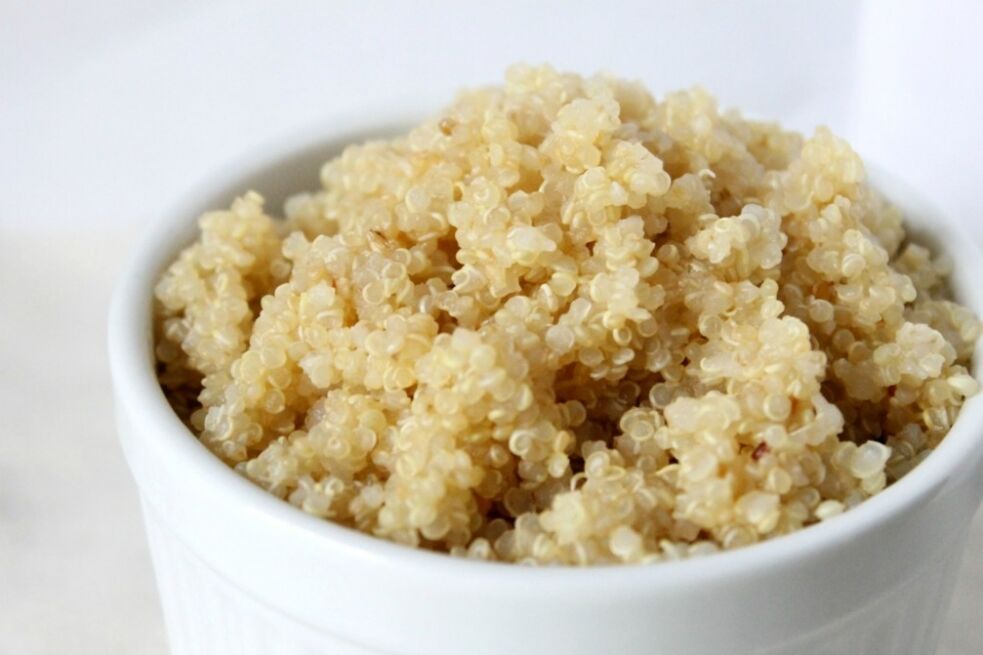
Ingredients: 100 g of quinoa, cumin, turmeric, salt to taste.
Semolina are washed well and then left to steep in water for 5-6 hours to remove bitterness. The quinoa is then rinsed again and placed in the multicooker bowl with the addition of water. The porridge is cooked in "Rice" mode for 25 minutes.
After cooking, add a small amount of salt, turmeric and cumin seeds to the porridge. Sprinkle with herbs.
thick greek yogurt
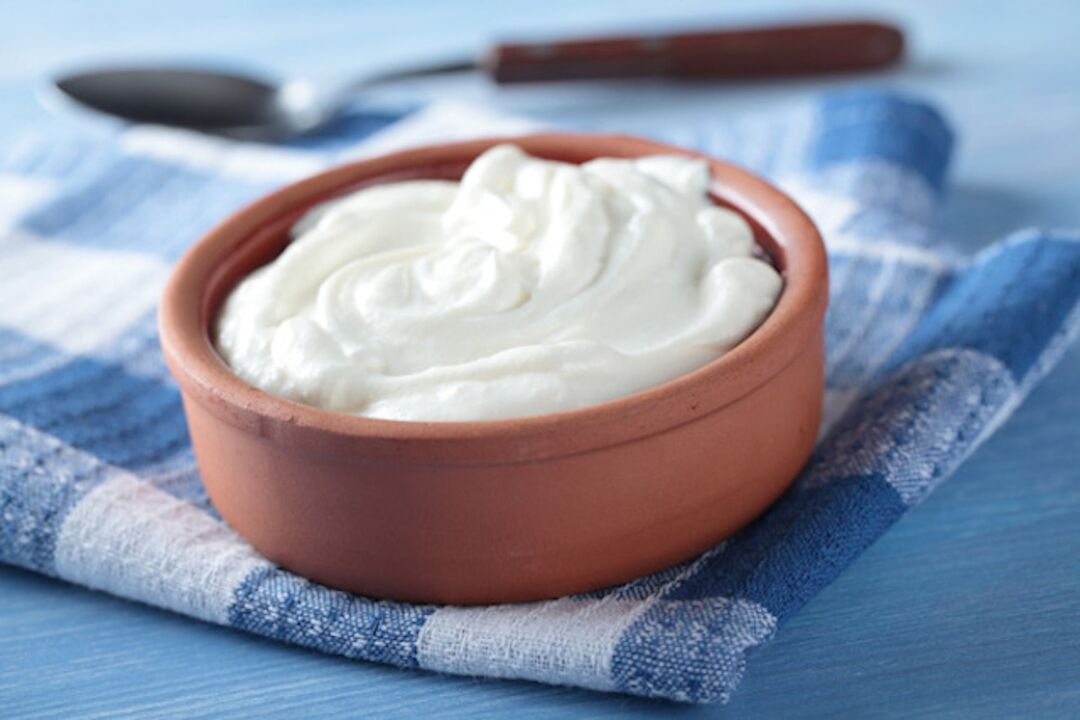
To prepare, you need 2 liters of milk, 4 tablespoons of plain yogurt or a drugstore yeast culture.
Pasteurized milk is heated to a temperature of 50 degrees (until the steam starts to rise from the milk) and fresh milk - up to 90 degrees (until the first froth appears). Then the yeast is added to the milk (the hot milk must be cooled to 50 degrees), covered with a lid, wrapped on top with a towel and left for 4-5 hours.
After this time, the container with the yogurt is carefully placed in the refrigerator for another 2 to 3 hours. For a thicker consistency, run the yogurt through a cotton cloth folded in 3 layers for 3 hours.
Greek yogurt is served with cottage cheese or herbs. The shelf life of the dish is 5-6 days.
going off the diet
After completing the diet, you must follow some nutritional rules to maintain the slimming results achieved. First of all, it is recommended to continue to exclude from the menu products that contain sugar and products made with white flour. It is also necessary to adhere to four meals a day without snacks between meals.
For breakfast and lunch, you can prepare porridge with meat, fish, chicken, a wholemeal bread sandwich with cheese, scrambled eggs. For afternoon tea, fruit is allowed, and for dinner you can prepare a salad with chicken or fish.
The amount of simple carbohydrates in the diet after the 6 petal diet must be strictly controlled and not exceed the daily dose of 200-300 kcal in order to avoid edema and weight gain due to water and fat.
Advantages and disadvantages
The 6 Petal Diet is an effective way to lose weight thanks to the following benefits:
- 500 gr loss. up to 1. 5 kg per day;
- rapid weight loss, which is associated with active removal of water from the body as a result of a decrease in the amount of glycogen in the body (one molecule of glycogen binds to four molecules of water);
- a short-term nutritional plan that allows you to continue dieting to maintain your weight.
Like any restriction, the diet has a series of disadvantages that can affect the physical and psychological state of the body:
- weight gain after canceling the diet and returning fast carbohydrates to the diet;
- the appearance of fatigue, irritation, lack of strength;
- the lack of healthy fats in the necessary amount on the menu, which can affect the functioning of the gastrointestinal tract and the nervous system.
The use of diet is contraindicated in the presence of serious diseases of the digestive, excretory and endocrine systems, such as:
- gastritis, pancreatitis, stomach ulcer, duodenal ulcer;
- diabetes;
- chronic inflammation of the gallbladder;
- anemia.
You can not diet during pregnancy and lactation, infectious diseases, acute respiratory viral infections.































































